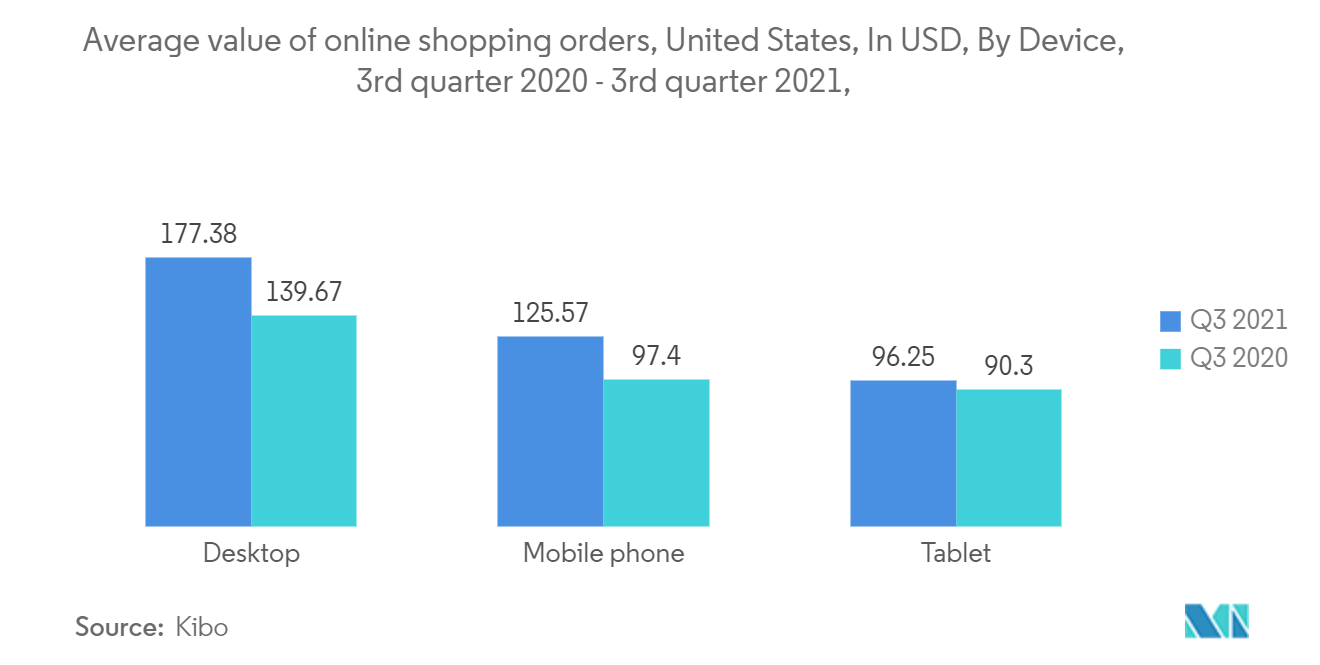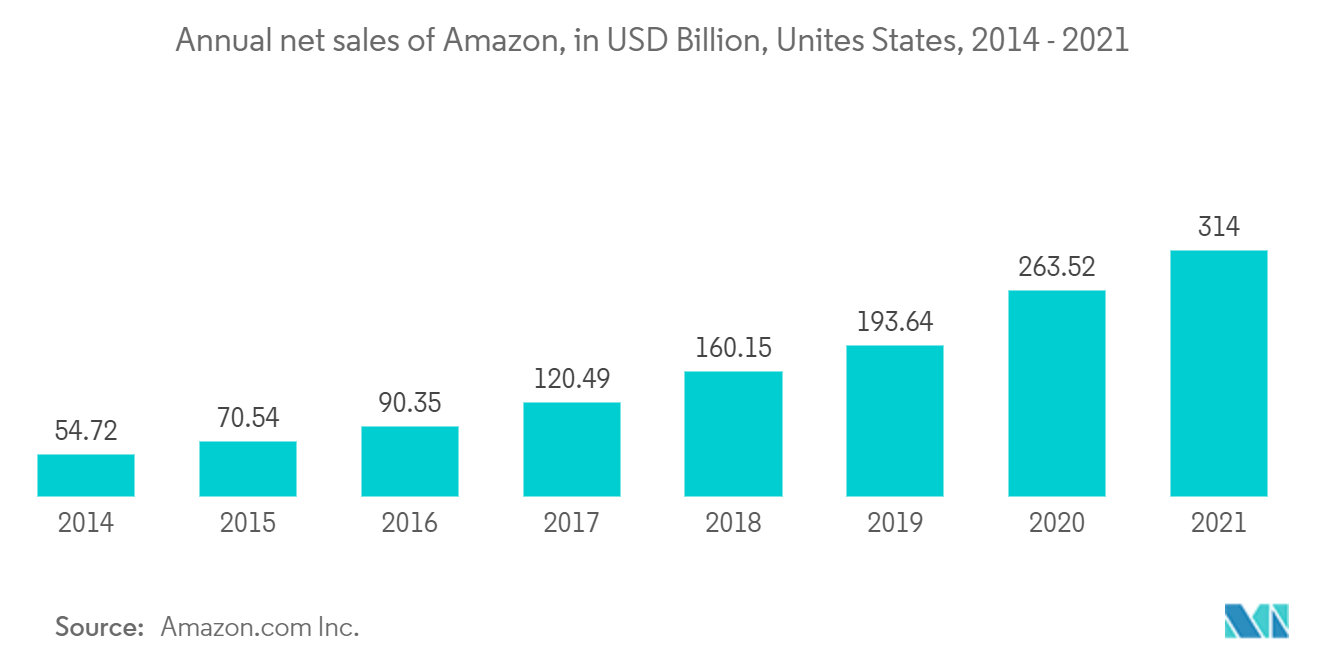Market Trends of United States Real Time Payments Industry
This section covers the major market trends shaping the US Real Time Payments Market according to our research experts:
Rise in the P2B Payment
- P2B payments refer to transactions of money between customers and businesses. The constant growth of e-commerce and mobile commerce is a key factor driving the segment's growth. For instance, as per Monetate; Kibo, The average value of U.S. online shopping orders in 2021 is increased on desktop compared to the same quarter in 2020. In the third quarter of 2021, online orders from a desktop computer had an average value of USD 177.38, up from USD 139.67 in the same period of the previous year. The orders fulfilled from the mobile phone were worth USD 125.57 on average.
- Real-time payment and mobile payment is revolutionizing the way payments are made today. For instance, the P2B high-value payment such as a car purchase, the demand for real-time availability of funds, and confirmation after transaction is very important for both consumer and the business.
- Additionally, companies like Google have made payments more convenient for smartphone users. The technology uses near-field communication (NFC) on supported smartphones and smartwatches. The user stores the debit or credit card information on the Android Pay account; the user can then pay for a service or item by simply placing the phone or watch near the retailer's point-of-sale terminal, which deducts the money from the customer account through NFC hardware.
- The demand for real-time payments market in the United States is highly contributed by the increasing awareness regarding the technology. Since the first wave of early adoption went live with The Clearing House (TCH) 's RTP network, numerous large banks in the United States have signed up for real-time payment, with hundreds of smaller institutions slated to follow.
- The shifts in payment behavior were majorly due to the pandemic. The U.S experienced the adoption of real-time payments and migration to online commerce from in-store. These shifts create new opportunities for payment players as government policies encourage the growth of digital payments, which is anticipated to aid the growth of real-time payment methods amongst consumers.

Growth in the Retail and E-commerce Sector
- Real-time payments were introduced primarily for retail/consumer, but now the benefits it can offer, corporate, business, and government payments are taking advantage of them. This has accelerated the adoption in the last few years in the region.
- The retail sector is growing exponentially; retail companies are using digital technologies and data to tailor services, products, experiences, and promotions to the individual and shift from maximizing supply chains to personalizing demand chains. This will boost the mobile payments method in the forecast time frame.
- Additionally, the United States is experiencing growth in sales as the eCommerce vendors are providing discounts on prepayments and monthly subscriptions. For instance, Amazon has witnessed growth in sales across selected leading markets. The net sales in the United States were Amazon's biggest market in 2021as; it generated USD 314 billion in net sales. This is expected to promote real-time payment methods in the United States.
- The surging demand for instant payment settlement from merchants and retailers has augmented the adoption of real-time payment solutions. These solutions provide a competitive edge to the retailers by offering them an affordable and efficient mode of payment. The proliferation preference for mobile-based shopping across the United States is also emerging as a major driver for the growth of this segment.


